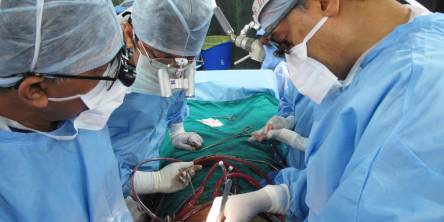A Guide to Heart Conditions

Heart conditions such as heart disease, heart failure, arrhythmia etc. are much more common than people think. Every day millions of people are living with some form of a heart condition. Whether you’ve had your condition for a long time, have a friend or family member with a heart condition, or you’re still struggling to adjust to a recent diagnosis, we want to share with you a guide to heart conditions.
What are some common heart conditions?
It’s helpful if you know what some of the most common heart conditions are, as this will give you a nice foundation of understanding of what’s going on. The most common heart conditions are:
- Coronary heart disease – occurs when the heart’s blood vessels become narrowed or blocked, resulting in not enough blood making it to the heart
- Angina – pain or discomfort in your chest, arms, neck, stomach, or jaw due to restricted blood flow to the heart
- Unstable angina – caused by undiagnosed chest pain or suddenly worsening angina. Attacks happen more frequently with less and less activity and can last up to 10 minutes.
- Heart attack – happens when blood flow to parts of your heart muscle is completely blocked
- Heart failure – the heart isn’t pumping properly to supply enough blood or oxygen to the body
- Arrhythmia – abnormal heart rhythms
- Valve disease – problems with the heart’s valves which puts a strain on the heart muscle
- High blood pressure – hypertension affecting the heart that can lead to other conditions
- Congenital heart conditions – abnormality or defect of a developing foetus in the womb
- Inherited heart conditions – conditions that are passed on through families and affect any age
Understanding your diagnosis
First things first, you’ll need to get a diagnosis for your heart condition so that you know exactly how your life is going to change, and what you’ll be dealing with. Once you’ve had a chance to digest the diagnosis, you should consider doing some research to help you understand your heart condition.
Understanding the condition that you have and the effects that it might have on you and your way of life is important. Through knowing all of this, you will have a better understanding of what adaptations you’ll need to make in your life.
All of this can be a lot to take in, so be sure to take things at your own pace and allow time to actually digest the information and how you feel.
Getting the right doctors
It’s important when you’re diagnosed with a heart condition that you seek out the right doctors to help you. Ideally, your regular GP will refer you to a specialist. A specialist, such as a cardiologist, will be able to help you get the right treatment.
A cardiologist is trained specifically in diagnosing, assessing, and treating patients who are suffering from defects of the heart and blood vessels (also known as the cardiovascular system). While other doctors may be able to help you in the short term, it’s important that you ask to be referred to a cardiologist if you haven’t been already.
After diagnosis
After being diagnosed with a heart condition, you’ll likely need to make some adjustments to your day-to-day life to make sure you stay healthy. For example, your diet is one of the big things you’ll probably be advised to change. A heart-healthy diet can do wonders for your overall quality of life and can reduce your chance of heart disease or stroke by 80%. There are many things that constitute a healthy diet, such as avoiding processed, fried and sugary foods. Fresh, ‘real’ foods are the basis of a healthy diet.
Exercise is also a big part of a healthy heart. Amongst other things, exercise can:
- Raise your HDL cholesterol (the good kind)
- Lower your LDL cholesterol (the bad kind)
- Lose fat around your middle
- Lower blood pressure
- Lower the risk of, and better control, diabetes
Depending on the severity of your heart condition and your risk level, your cardiologist may recommend specific exercises you can do to improve your heart health. There may also be exercises that you are advised to avoid, as they may be too intense or strenuous and will therefore put too much stress on your heart.
Heart conditions are serious, so it’s important that you are familiar with them – especially if you or a loved one has one. There are things that you can do to decrease your risk of developing one. In any case, this article has hopefully shed some light on heart conditions for you.
Similar Articles
Today every third human is facing heart disease, and it's not a good sign. A recent study says that out of 10, the reason for death for 8 people is heart failure.
A quarter of all deaths is caused by heart disease in the UK. This means that every three minutes, someone dies due to heart complications. These figures are worrying. But, luckily, there are things you can do every day to reduce your risk of developing heart disease.
Premature heartbeats are a kind of heart rhythm disturbance, which may signal about some more serious heart malfunctions. Nevertheless, premature heartbeats can occur both in individuals who have developed coronary heart disease or cardiomyopathy and in those, with a healthy organ.
Did you know that choking, snoring, shortness of breath, daytime drowsiness and multiple episodes of nighttime waking are all indications that you may be suffering from obstructive sleep apnea? OSA has been linked as a precursor to multiple health conditions such as hypertension, heart disease, diabetes, and even Sudden Cardiac Death.
Congenital heart disease is a term used to define a group of different kinds of conditions that affect the heart. These problems will begin to affect the baby’s heart during while the baby is in the womb.
The majority of people experience “arrhythmias” (irregular heartbeats) at some point in their lives. Most of the time, these arrhythmias occur in healthy people (free of heart disease).
Before knowing how to survive a heart attack, you must first know what is happening to your body
There are mainly four types of valves present in our heart and they are mitral, tricuspid, aortic
Don’t treat your heart disease as your fate. Although there are some risk factors that we are not able to control, there are some risk factors that we can control.









